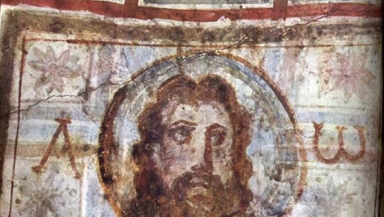On this day in 1578 a momentous discovery of Christian history was made in Rome, completely by accident.
An entrance into the ancient Roman catacombs was discovered on the Via Salaria, in 1578. The actual significance of the site wouldn't be discovered until 1593, when archaeologist Antonio Bosio first explored the catacombs and dedicated his life to understanding what he found, documenting it in a landmark book, Roma Sotterranea, not published until after his death.
The discovery of the Roman catacombs granted a remarkable insight into the life of the early church. Images found there depicted not only its attitude to life and death but its creative use of symbols too.
Christians in Rome from the 3rd century onward were forbidden from burying their dead in the city at regular burial grounds. Instead, they were forced to use catacombs, underground vaults used largely by the city's poor. Rather than simply filling these crypts with their dead, the Christians embellished the catacomb surroundings with images from Scripture and early symbols of Christ. The catacombs – a complex network of tunnels beneath the city – became regarded as holy sites, since they housed Christian martyrs. They may have been used as sites of Christian worship, though more recent research suggests this was not actually the case.
Funerary slabs could be inscribed not just with the names of the deceased but with profound signs and pictures, depicting biblical scenes and showing how believers understood life and death. The Good Shepherd (a shepherd carrying a sheep on his back), for example, was a common symbol. It echoed Psalm 23, describing the Lord as the shepherd who guides one even through the valley of the shadow of death, and promises that – with special meaning for Christians – 'I will dwell in the house of the Lord forever'. As Gabriele Finaldi notes in The Image of Christ, the shepherd offered consolation, and a sign of the saviour who guarantees his providence even through the pain of death.

Another common symbol in the catacombs was the Icthys, the image of a fish – a symbol that has found been as far back as the second century AD. The Icthys (the Greek name for 'fish') was a visual pun imbued with early Christian doctrine. As an acronym it formed the initial letters for the Greek phrase: 'Jesus Christ, Son of God, the Saviour'. To show an image of a fish was a subtle way of signifying Christian confession. It was a symbol full of potential meanings: St Augustine would later write that Christ was the Icthys who in the incarnation descended into the depths of mortality, as a fish descends into water.
Many Christian funerary slabs from the catacombs have since been restored and placed in the Vatican's museums, as evidence of the life of the early, often embattled church before it became the state religion of the Roman Empire.













